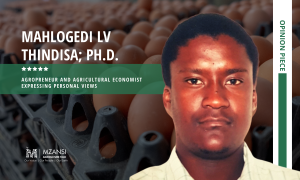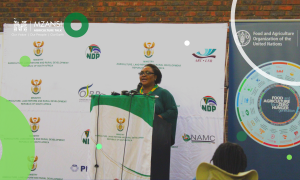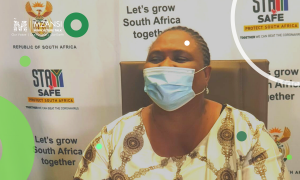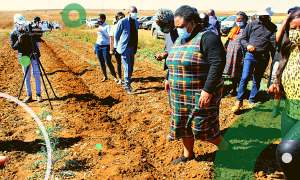Attending an academic conference is one of the most personally and professionally rewarding experiences I have had the honour of experiencing during the years that I have been in academia. Below are five (5) personal and professional benefits that can be derived from attending academic conferences:
(1) Learning
“Never stop learning, because life never stops teaching” – Lin Pernille
A conference is an opportunity for researchers to discover the latest developments in their field, in terms of recent findings and/or improved theoretical frameworks and research methods. The discovered developments can channel researchers towards future researchable topics in their field, and/or help researchers to refine their existing research.
(2) Networking and collaboration
“Your network is your net worth” – Zig Ziglar
Every early researcher has that “one academic” – a well-established researcher with a good academic reputation, whose work they admire and with whom they would like to collaborate, given the opportunity. An academic conference is a platform and a rare opportunity to meet and chat with such an academic. And who knows, perhaps a brief chat with that “one academic” could result in a collaboration that would otherwise have been impossible without conference attendance. As alluded to by Dr McQuillin, a University of East Anglia lecturer in economics, conferences play a key role in the formation of complex collaborations in order to forge and sustain relationships between socially distant authors – authors who are from different institutions and have not been part of the same authorship network.
(3) Publication
“Publication is a marathon, not a sprint” – Jo Linsdell
Presenting a paper at a conference is one of the stepladders towards publication, as it is a chance to receive positive feedback and constructive criticism from experts in the same field on an early version of a researcher’s paper. The feedback acquired in this way can help researchers to improve the standard and quality of their papers, which positions them to have a good chance of having their papers being accepted for publication in journals.
(4) Professional development
“Continuous personal and professional development is your key to the future” – Brian Tracy
Academic conferences play an important role in the growth and development of young academics, as conference papers are among the metrics used for the promotion of academics. As such, conference papers enable academics to serve in academic roles and thereby enrich their careers.
(5) Fun
“Human beings are social animals. We were social before we were human” – Peter Singer
One of the factors that determine the choice of the conference venue is the centre of attraction of the location – a location with a sea view, landmarks, an exotic beach, or an elegant shopping centre. While academic conferences are professional rather than leisure events, the locality of the conference can serve as an escape from the “lonely and boring” academic life. Thus, attending a conference is also a personally rewarding experience for academics through travelling to a new place, eating new food, touring a beach and, of course, shopping at a new spot.
The above points are a summation of what makes academic conferences a “big deal” and an essential part of my academic life. While some points might be more worthwhile than others, point no. 5 (Fun) is my favourite, as it is through academic conferences that I have had the opportunity to travel to several different countries. It was through the 10th Conference of the African Farm Management Association that I visited Mauritius in November of 2016. I travelled to Abuja, Nigeria in September 2019 through the 6th African Conference of Agricultural Economists. It was through the 8th International Conference on Agricultural Statistics that I visited New Delhi in India in November of 2019. Today, I reminisce about the fact that travelling to these countries would have been impossible without conference attendance.

Upon reaching a certain level in life, a befitting goal is to reach a higher level than the preceding level. In the context of this precept, my goal for 2020 included a footprint in the developed world and in particular, presenting a paper at a conference in a European country. It is good to have dreams – that’s what makes life fascinating – having something to hope for and look out for. However, we have been schooled by the holy scriptures that “Faith without action is dead”. To this end, I had to take action for the European dream to become a reality – a lived experience.
“Take action! An inch of movement will bring you closer to your goals than a mile of intention.” – Steve Maraboli
The European dream seemed attainable once I had received the call for papers for the 30th World Conference of the International Food and Agribusiness Management Association (IFAMA), which was set to take place in Rotterdam in the Netherlands from 15–18 June 2020. In line with the “action taking” precept, I submitted a full paper to the IFAMA on 13 January 2020, on the verge of the deadline for the submission of papers. According to the archives of the World Health Organization (WHO), this deadline was at a time when few COVID-19 cases had been reported in China, and the day on which the WHO confirmed a case of COVID-19 in Thailand – the first recorded case of COVID-19 outside of China. At this time, not much was known about COVID-19 – symptoms, prevention methods, severity, and how widespread it would become. So, life was carrying on as usual; conference plans for 2020 were continuing as scheduled and so was my European dream.

On 20 February 2020, the dream seemed highly possible when I received the exciting news from the IFAMA that my paper had been accepted for presentation at the IFAMA’s 30th World Conference. To add to the excitement, the paper had been accepted not only for presentation but also for publication in the International Food and Agribusiness Management Review (IFAMR), journal of the IFAMA. However, during March 2020, the excitement faded when the COVID-19 pandemic hit South Africa, with new information about the alarming spread and severity of COVID-19 constantly developing. Eventually, the European dream seemed highly improbable when the governments of both South Africa and the Netherlands imposed lockdown regulations to contain the rate of transmission of COVID-19 to save lives. For both countries, these regulations included the closure of schools and restaurants, the prohibition of sporting events and large gatherings, social distancing, and restrictions on the movement of people between and outside national borders.
Governments implemented similar regulations in other parts of the world as positive COVID-19 cases and fatality rates continued to increase. For this reason, some associations cancelled their scheduled conferences for 2020 indefinitely, while some opted for a hybrid model (in-person and virtual), and others opted for a fully virtual model. For instance, the Agricultural Economics Association of South Africa (AEASA) indefinitely cancelled its 58th Annual Conference, which was set to take place in Phalaborwa, Limpopo Province, from 28–30September 2020.

Sourced from AEASA Twitter Account (@AEASA_LEVSA)
The RW-856th International Conference on Medical and Biosciences (ICMBS) opted for a hybrid model by allowing participants who could not attend in person in Munich, Germany on 3–4 July 2020, to present their oral and poster papers online through Zoom. The American Chemical Society (ACS) opted for a fully virtual model by turning its Spring National Meeting & Expo into the ACS Fall 2020 Virtual Meeting & Expo.
“It is bad news. But we just have to get on and deal with it” – Alan Phillips
As I witnessed the cancellation of and changes to these conferences, I waited for the IFAMA to follow suit. On 1April 2020, the much-awaited news landed in my email inbox, informing me that the executive board of the IFAMA and the local organising committee in Rotterdam had decided to cancel the IFAMA 2020 Conference due to COVID-19. This cancellation, though inevitable, was a triple blow for me – (1) European dream deferred, (2) No conference paper and (3) No publication. The first blow has been soothed by the rapper Drake through his “Toosie Slide” song when he vocalises that “If it’s not the right time, there’ll always be another time”. The second blow has been soothed along with the first blow. It is the third blow that hit me the hardest, in that the cancellation implied that the paper would not be published in the IFAMR, as it was accepted for publication as part of IFAMA 2020 Special Issue (i.e. Proceedings of the IFAMA 2020 Conference). While the ideal solution would have been to submit the paper to another journal, it is the thought of the lengthy and exhausting turnaround publication time that drained me without having to go through it.
“When life gives you lemons, make lemonade.”
The cancellation of the conference also had a bearing on the IFAMA itself, as it stood to lose out on the conference fees, which keep most associations afloat. Another loss would have been in the form of publication fees charged by IFAMR and to be paid for by authors of the IFAMA 2020 Special Issue. I believe that it is on the grounds of these potential losses that the IFAMA made a U-turn by having its 1st Virtual World Conference from 23–24 September 2020. For authors like myself, this move implied gains through two research outputs in the form of a conference paper and a publication in IFAMR. For the IFAMA, the move implied the generation of income through conference fees and publication fees. Overall, the IFAMA “made lemonade out of the lemons” that COVID-19 threw at us, by hosting a virtual conference that was mutually beneficial to all parties to the conference.

As COVID-19 has propelled associations like the IFAMA to adopt the virtual model of conferencing, many of the future discussions and decisions on conferences will be centred on the pros and cons of virtual versus in-person conferences or a combination of both. Hence, it is crucial to take readers through the 1st IFAMA Virtual Conference – the preparations, the anticipated hurdles and how they were addressed, as well as conference activities and the platforms through which they were delivered.
“To be prepared is half the victory” –Miguel de Cervantes
The 1st Virtual Conference of the IFAMA was history in the making – a great deal of effort went into the preparation for the event, which involved the pre-recording of videos, as well as rehearsals. The pre-recording of videos involved the preparation of the presentation slides and recording of the presentation. Presenters were sent a detailed list of how to prepare the presentation slides, including the choice of the design theme, the length and limit of the presentation slides, the structure of the presentation, and the type of information to place on all the slides. Three video communication services were recommended for the recording: (1) Loom, (2) Zoom and (3) Screencast-O-Matic. Presenters were sent detailed information on how to prepare their presentations on any one of these services. The details entailed positioning the camera, testing the audio, and choosing the perfect lighting and the background in which the video was being recorded.
As we got closer to the conference dates, a quick 15-20-minute Zoom rehearsal meeting with IFAMA presenter coaches was scheduled to assess the presenters’ readiness for their sessions. The rehearsals took place during the week of 11–18 September 2020 for presenters from around the world to choose their most suitable dates and times for the rehearsals. The rehearsals aimed to ascertain that the pre-recorded videos were free of disruptions (technical glitches) and that the camera settings and sound were at an acceptable standard, and most importantly, to ensure that the presenters were geared up to tackle the questions that would be posed to them by conference participants.
“Life’s problems wouldn’t be called ‘hurdles’ if there wasn’t a way to get over them.”
The next activity after the rehearsal was the development of the conference schedule. Developing a conference schedule is a “no-brainer” – the challenge lies in developing a schedule for the virtual conference involving participants from across the globe with different time zones. To overcome this hurdle, the participants were scheduled to present in their suitable local time zone. Accordingly, my session was scheduled for 09:00–09:30 SAST on 23 September 2020.

Each session required a moderator to introduce the speaker and facilitate the live Q&A discussion following the presentation of the pre-recorded video. An additional hurdle was that of ensuring that each presenter’s suitable session time corresponded with the moderator’s suitable time. To address this hurdle, the organisers selected moderators who were from the same locality as the presenters. To this end, my session was moderated by Prof. Johan van Rooyen, the former president of the IFAMA and Stellenbosch University’s Director for Agribusiness and Professor in Agricultural Economics.
“Never let a good crisis go to waste” – Sir Winston Churchill
The virtual conference took place through the Whova virtual mobile and web-based event app. The conference featured 143 attendants and more than 60 sessions, including the best paper competition, global student essay competition, academic research presentations, teaching of case-study workshops, and roundtable discussions. Other key activities included the IFAMA 20 Year Celebration, the IFAMA Young Board Meeting, special sessions and support activities such as online discussions and exhibitions, and announcements by the organisers.
There were four (4) features and platforms, namely Community Board, Airmeet, Speaker Hub, and Zoom, through which the sessions and activities were delivered. The online discussions took place through the Whova Community Board feature for participants to initiate session-related threads wherein others could view discussions and give input. The exhibitions also took place through the Community Board for exhibitors to market their products to participants and set up meetings for participants interested in knowing more about the marketed products. The Community Board was also used by the organisers to keep the participants abreast of the upcoming activities and other conference-related issues. In a nutshell, the Whova Community Board is basically a virtual version of the face-to-face hallway discussions and exhibitions, and the in-person announcements, which traditionally take place during in-person conferences.

An exciting feature of Whova is that it integrates all mainstream video services, including Zoom, Airmeet, Google Hangouts, YouTube Live, Periscope, and Facebook Live. As such, events such as the IFAMA 20 Year Celebration, the IFAMA Young Board Meeting and special sessions took place on Whova through Airmeet. The academic research presentations also took place on Whova through Zoom.
The speakers’ pre-recorded presentation videos were uploaded on the Speaker Hub, which features platforms such as “My Sessions and Audience”, “Questions from My Audience” and “Promote My Session”. The “My Sessions and Audience” platform traces the number of participants intending to attend a speaker’s session, as well as those who have watched a speaker’s pre-recorded video, the number of questions asked, as well as comments and likes.

The “Questions from My Audience” hub is for the participants to post their questions to the speaker and for the speaker to reply to the questions posed. The “Promote My Session” hub is for the speakers to promote their sessions on social media platforms.

After having gone through all the preparatory phases, the 23rd of September 2020 was finally upon me to hit the stage as scheduled for 09:00 – 09:30 SAST. Both Prof. van Rooyen and I managed to join the session on time. At exactly 09:00, Prof. van Rooyen assumed his moderator duties by introducing me to the session attendants before the pre-recorded video of my presentation was played. Thereafter, he facilitated the Q&A session, which was comprised of direct questions from the live audience and questions posed by the live audience through the chatroom. The entire session lasted for less than the allocated 30 minutes without any technical glitches in terms of network connectivity issues, echoing sound, system delays, freezing up of video, screen sharing failures, etc.

“Remember to celebrate milestones as you prepare for the road ahead” – Nelson Mandela
A few minutes later, I felt a sense of achievement after realising that a conference paper had been added to my research output catalogue on the morning of 23 September 2020. This had happened in the comfort of my own space, without having to travel to present the paper in the Netherlands – a milestone in my academic odyssey and a moment I never thought I would experience, and be able to share with others (through the writing of this article). This moment was a reflection of the “new normal” way of conferencing in the face of COVID-19, and it set the tone for the future of academic conferences.
Several lessons can be drawn from the IFAMA 2020 Virtual Conference as follows:
The governments of many countries have lowered their COVID-19 lockdown regulations by opening up public spaces, with restrictions on the number of people permissible in a gathering, and by derestricting the movement of people from outside national borders (subject to specified measures), among other things. However, some of the countries that have done so have experienced a resurgence in positive COVID-19 cases.
Against this backdrop, it is impossible to predict with certainty regarding how long COVID-19 restrictions will last before life returns to the old “normal”, allowing associations to hold face-to-face conferences again. The indications are that the restrictions will be in place until there is a viable vaccine available. As such, the shift from the in-person model to the virtual conference model might be a reality for years to come. Also, even before the COVID-19 outbreak, there were indicators that the in-person model might be obsolescence due to various factors – the key being the lack of funds for conference attendance. As a case in point, the acceptance of an author’s paper for presentation at a conference is not a guarantee that the author will attend the conference, as attendance requires funding for the payment of registration fees, accommodation, taxes and transfers, and other associated costs.
“All that glitters is not gold” – William Shakespeare
While lack of funding is a challenge, I never expected this to be a challenge for university academics. The reason I expected better is that research is one of the core functions of universities. To validate this, browse through any university website and you will find research as being at the centre of that university’s mission to achieve its ultimate vision. The same is true for the faculties, departments and centres that are entrenched within a university. However, despite the importance of research to universities and the gains in research output derived from conference papers, university academics are often faced with a lack of funds to present papers at conferences. As such, the COVID-19 pandemic is a “blessing in disguise” in that it has propelled the associations to adopt a less costly virtual model of conferencing, which has saved some of us from the lengthy, often hostile, and exhausting process of requesting funds from those entrusted with administering university funds. Overall, the virtual conference model may be the best alternative for professionals whose papers have been accepted for presentation but lack the funds to cover the travel and accommodation costs.
“Expect the best, plan for the worst and prepare to be surprised” – Denis Waitley
There are three (3) factors, in addition to the lack of funds, that make the virtual conference model more desirable for some groups of professionals. Firstly, virtual conferences foster diversity and equality in that they ensure participation by those who were previously unable to attend in-person conferences, particularly those who were unable to travel to conferences due to disabilities. Virtual conferences also free up married professionals from worrying about who will take care of their families while they are away at conferences. Secondly, virtual conferences ensure more dynamic engagements than in-person conferences, due to the presence of platforms such as Whova, with features for participants to view presentations, ask questions and make comments on-demand – before, during and after sessions. Asking questions before sessions saves moderators from the non-question awkward moments that are often experienced during sessions.
Furthermore, with virtual conferences, anyone who may have missed a session they would have liked to attend can watch that session on-demand and engage the presenter afterwards through the available online chatroom. Thirdly, virtual conferences ensure participation by individuals who are too timid to speak up and those who prefer writing instead of talking. Therefore, hosting a conference virtually empowers such individuals to participate in the conference proceedings by posting their questions and comments online instead of talking.
Despite the aforementioned pros of the virtual conference model, numerous organisational and technical hurdles make this model undesirable in the absence of COVID-19 for three reasons. Firstly, virtual conferences require a great deal of effort in terms of preparing for the event, the updating of conference attendants, and the co-ordination of speakers and moderators from different time zones. Secondly, there is a possibility of technical hurdles, and participants may be distracted by their daily routines either at work or at home. Thirdly, some researchers may be reluctant to share their presentations via online conference platforms as they can be viewed and downloaded online.
The abovementioned hurdles epitomise the fact that the virtual conference model has certain drawbacks, just like the in-person conference model, which makes it difficult for one model to be preferable over the other. From this perspective, the hybrid model, which is a combination of both models, might be beneficial to all parties to the conference. As a case in point, the virtual aspect of the conference would benefit those with a lack of funds to cover travel and accommodation costs and ensure participation by those who were previously unable to participate, thus ensuring diversity and equality. The physical aspect of the conference would minimise the organisational and technical challenges posed by a fully virtual conference model. Also, associations are set to benefit from the income that is generated through conference fees (registration and sponsorship fees). In summation, when COVID-19 ultimately subsides and all the related restrictions are eliminated, the hybrid model might be the best model of conferencing for future academic conferences.




















